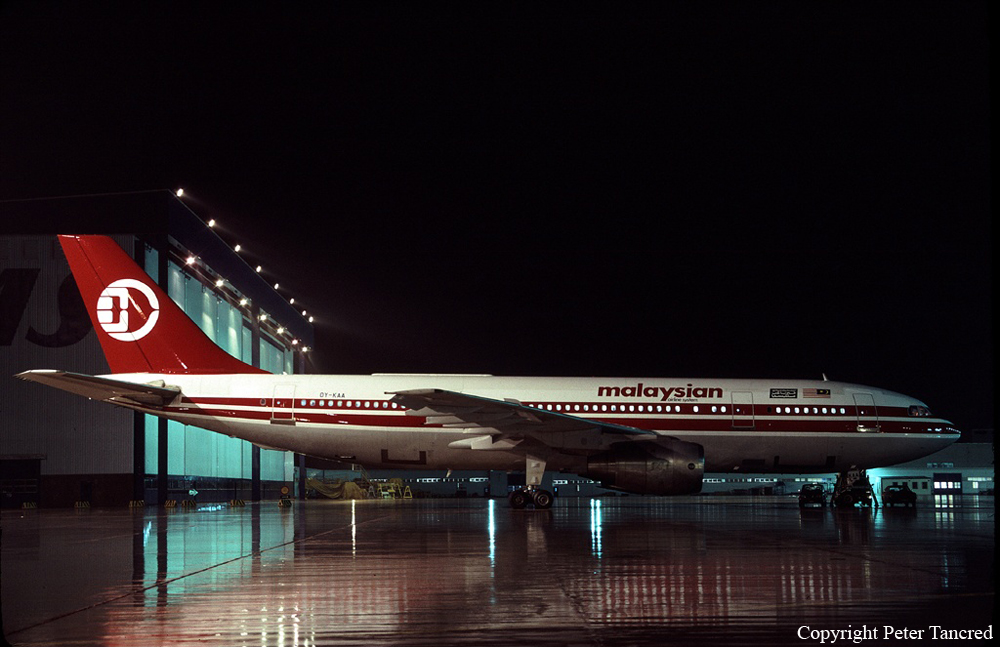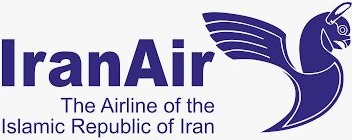Country
Ground explosion of an Airbus A300B2-1C in Marseille: 7 killed
Date & Time:
Dec 26, 1994 at 1700 LT
Registration:
F-GBEC
Survivors:
Yes
Schedule:
Algiers - Paris
MSN:
104
YOM:
1980
Flight number:
AF8969
Crew on board:
7
Crew fatalities:
Pax on board:
163
Pax fatalities:
Other fatalities:
Total fatalities:
7
Circumstances:
On December 24, prior to departure from Algiers-Houari Boumediene Airport, four members of the Groupe Islamique Armé (GIA) hijacked the aircraft that remained parked there for two days. On December 26, the aircraft was flown to Marseille. After being parked there for few hours, the aircraft was stormed by French Police Forces. Few hand grenades exploded in the main cabin and the cockpit, causing serious damages to the aircraft. All four terrorists and three passengers were killed during the attack. Ten other people were injured.
Probable cause:
Damaged beyond repair by hand grenades after being hijacked by members of the Groupe Islamique Armé (GIA).
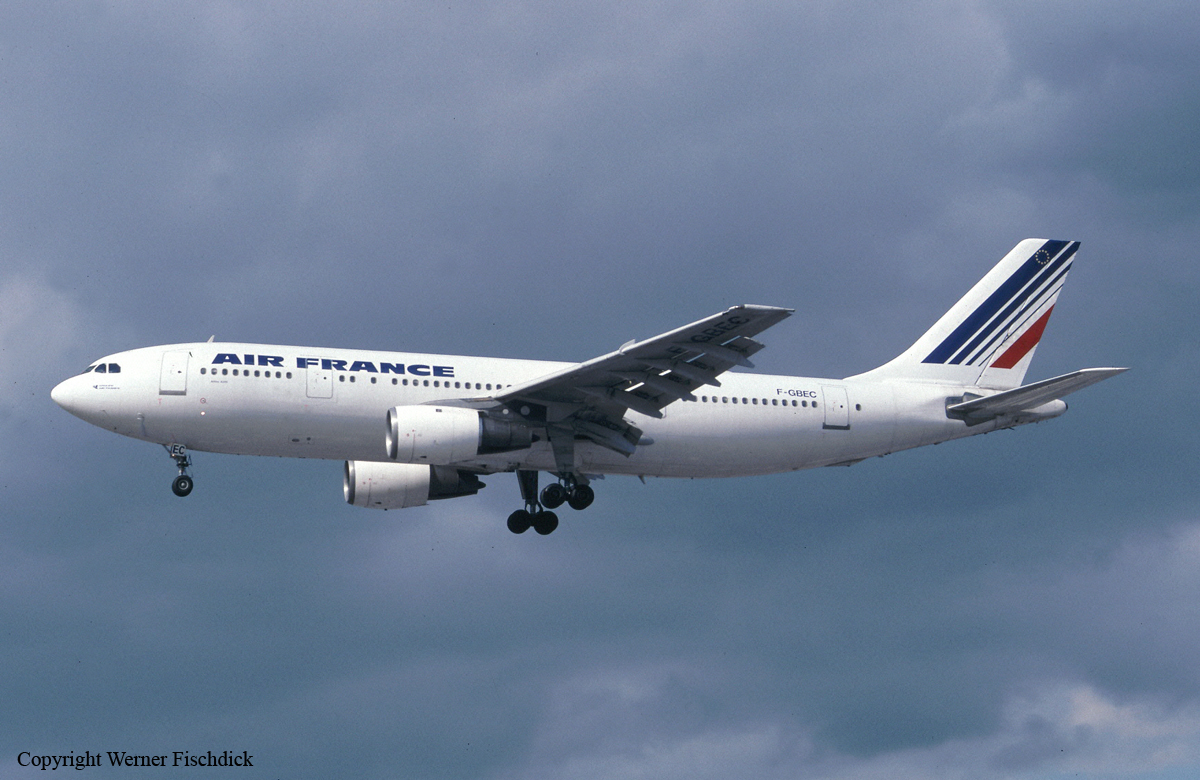
Crash of an Airbus A300B2-101 near Tirupati
Date & Time:
Nov 15, 1993 at 0925 LT
Registration:
VT-EDV
Survivors:
Yes
Schedule:
Madras - Hyderabad
MSN:
034
YOM:
1976
Flight number:
IC440
Crew on board:
12
Crew fatalities:
Pax on board:
250
Pax fatalities:
Other fatalities:
Total fatalities:
0
Circumstances:
Indian Airlines Airbus A-300 aircraft VT-EDV was operating scheduled flight IC-440 (Madras - Hyderabad sector) on 15.11.1993. There were a total of 262 persons were on board the aircraft including 247+3 passengers and 12 crew members. The aircraft could not land at Hyderabad due to low visibility and carried out a missed approach. After the missed approach, the aircraft reported "Flap Problem" and was holding overhead at Hyderabad during which the flight crew enquired visibility at nearby Air Force airfields which was also low. The aircraft then diverted to Madras. Due to flaps problem, the crew had to maintain low speed and low altitude as a result of which it experienced fuel shortage and sought permission from Madras control for landing at Tirupati. However, the aircraft could not reach even Tirupati airport and executed forced landing in an open paddy field about 14 nautical miles from Tirupati airport. The aircraft dragged on the soft paddy field before coming to final stop. There was no fire. Passenger evacuation was carried out by means of escape slides. All the persons on board escaped unhurt except four who received minor injuries.
Probable cause:
The probable cause of accident has been attributed to:
- The ill-conceived decision of the aircraft's Commander to divert to Madras, without ensuring that adequate fuel was available for reaching there, when he was faced with a flap-jam and poor
visibility at Hyderabad.
- The failure of the aircraft's Commander and his Flight Crew to monitor fuel consumption correctly, and the failure of the Commander to revise his decision accordingly, until it became impossible to reach any airfield.
- A forced landing due to the eventual shortage of fuel.
- The ill-conceived decision of the aircraft's Commander to divert to Madras, without ensuring that adequate fuel was available for reaching there, when he was faced with a flap-jam and poor
visibility at Hyderabad.
- The failure of the aircraft's Commander and his Flight Crew to monitor fuel consumption correctly, and the failure of the Commander to revise his decision accordingly, until it became impossible to reach any airfield.
- A forced landing due to the eventual shortage of fuel.
Final Report:
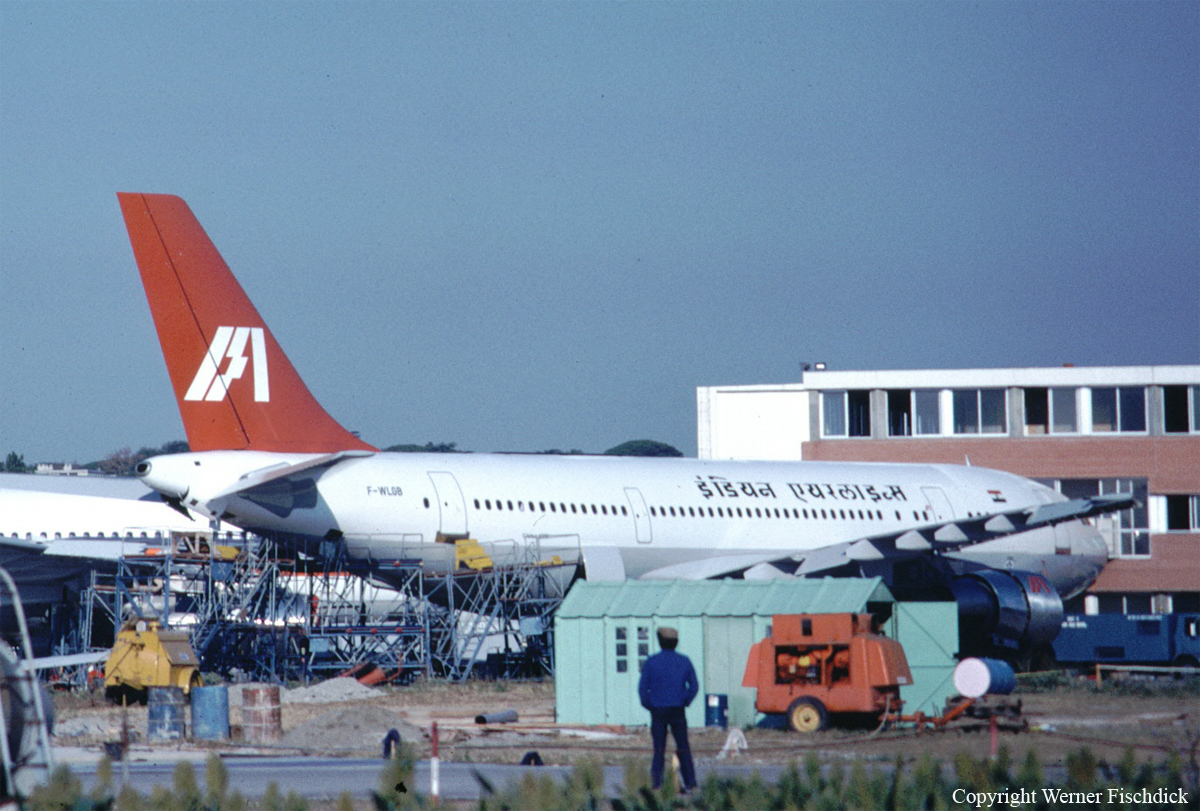
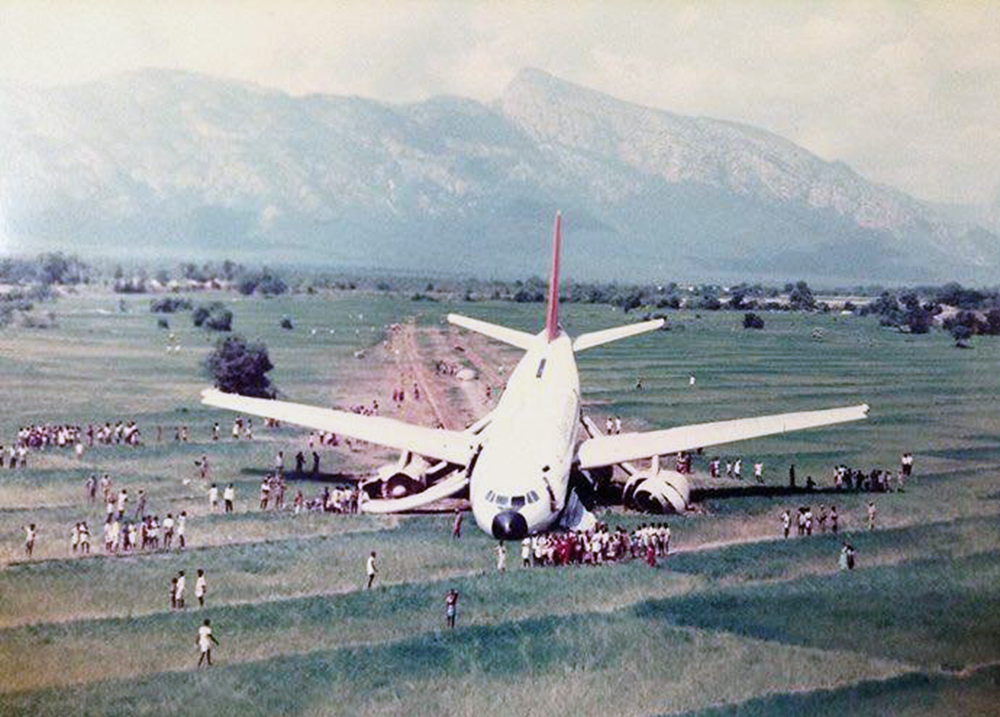
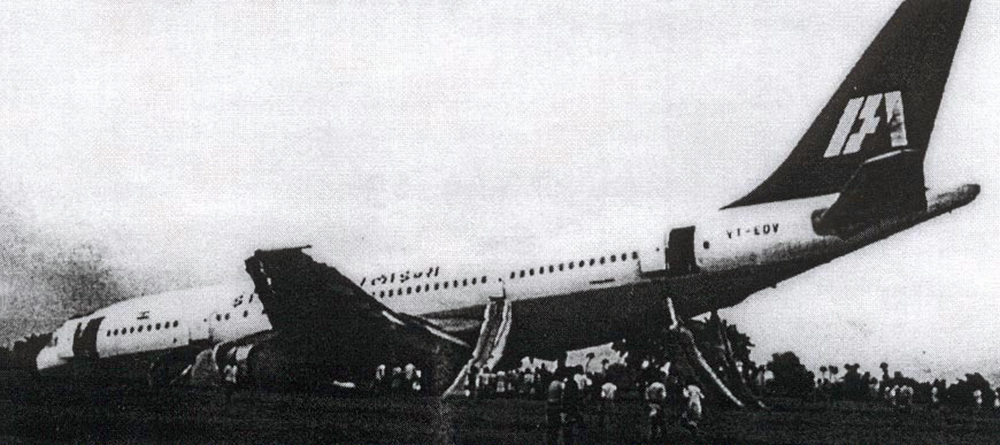
Crash of an Airbus A300B4-203 in Kathmandu: 167 killed
Date & Time:
Sep 28, 1992 at 1430 LT
Registration:
AP-BCP
Survivors:
No
Schedule:
Karachi - Kathmandu
MSN:
025
YOM:
1976
Flight number:
PK268
Crew on board:
19
Crew fatalities:
Pax on board:
148
Pax fatalities:
Other fatalities:
Total fatalities:
167
Captain / Total hours on type:
6260.00
Copilot / Total hours on type:
1469
Aircraft flight hours:
39045
Aircraft flight cycles:
19172
Circumstances:
The ill-fated aircraft departed Karachi Airport Pakistan, at 0613 hours UTC on 28 September 1992 as Pakistan International Airlines Flight Number PK 268, a non-stop service to Kathmandu, Nepal. The accident occurred at 0845 UTC (1430 hours local time) when the aircraft struck a mountain during an instrument approach to Kathmandu’s Tribhuvan International Airport. The impact site was at an altitude of 7280 feet above sea level (2890 feet above airport level), 9.16 nautical miles from the VOR/DME beacon and directly beneath the instrument approach track from the VOR/DME beacon (9.76 nm from and 2970 ft above the threshold of Runway 02 which is 77 feet below the airport datum). The flight through Pakistani and Indian airspace appears to have proceeded normally. At 0825 hrs UTC (1410 hrs local time) two-way contact between Pakistan 268 and Kathmandu Area Control West was established on VHF radio and the aircraft was procedurally cleared towards Kathmandu in accordance with its flight plan. After obtaining the Kathmandu weather and airfield details, the aircraft was given traffic information and instructed to report overhead the SIM (Simara) non-directional beacon (214°R VOR/39 nm from Kathmandu’s KTM VOR/DME) at or above FL150 (flight level on standard altimeter) as cleared by the Calcutta Area Control Centre. At 08:37 hrs the copilot reported that the aircraft was approaching the SIM beacon at FL 150, whereupon procedural clearance was given to continue to position SIERRA (202°R/10 nm from the KTM beacon) and to descend to 11,500 feet altitude. No approach delay was forecast by the area controller and the co-pilot correctly read back both the clearance and the instruction to report at 25 DME. At 08:40:14 hrs, he reported that the aircraft was approaching 25 DME whereupon the crew were instructed to maintain 11,500 feet and change frequency to Kathmandu Tower. Two-way radio contact with the Tower was established a few seconds later and the crew reported that they were in the process of intercepting the final approach track of 022M (Magnetic) of Radial 202 KTM VOR ) They were instructed to expect a Sierra approach and to report at 16 DME. At 08:42:51 hrs the first officer reported “One six due at eleven thousand five hundred”. The tower controller responded by clearing the aircraft for the Sierra approach and instructing the crew to report at 10 DME. At 08:44:27 the first officer reported 10 DME and three seconds later he was asked, “Report your level”. He replied, “We crossed out of eight thousand five hun,’ two hundred now”. The controller replied with the instruction “Roger clear for final. Report four DME Runway zero two”. The copilot responded to this instruction in a normal, calm and unhurried tone of voice; his reply was the last transmission heard from the aircraft, thirty-two seconds after the copilot reported 10 DME the aircraft crashed into steep, cloud-covered mountainside at 7,280 feet amsl and 9.16 nm on radial 202 of KTM VOR. All 167 occupants were killed.
Probable cause:
The balance of evidence suggests that the primary cause of the accident was that one or both pilots consistently failed to follow the approach procedure and inadvertently adopted a profile which, at each DME fix, was one altitude step ahead and below the correct procedure. Why and how that happened could not be determined with certainty because there was no record of the crew's conversation on the flight deck. Contributory causal factors were thought to be the inevitable complexity of the approach and the associated approach chart.
The following findings were reported:
- The flight deck crew were properly licensed and medically fit,
- The aircraft had been properly maintained and was fit for the flight and the essential aircraft systems were operating normally during the approach,
- The SIERRA approach to Kathmandu is a demanding approach in any wide-bodied aircraft,
- Unlawful interference and extreme weather were not causal factors,
- The crash site was enveloped in cloud at the time of the accident,
- There was no ATC clearance error,
- The VOR DME beacons used for the approach were operating satisfactorily and there was no evidence of failure or malfunction within the aircraft’s DME equipment,
- The aircraft acquired and maintained the correct final approach track but began descent too early and then continued to descend in accordance with an altitude profile which was consistent with being 'one step ahead' and below the correct profile,
- At 16 DME the co-pilot mis-reported the aircraft’s altitude by 1,000 feet,
- The commander did not adhere to the airline’s recommended technique for the final part of the approach which commenced at 10 DME,
- The 10 DME position report requested by the Tower controller was made at an altitude below the minimum safe altitude for that portion of the approach,
- The altitude profile on the Jeppesen approach chart which should have been used by the pilots was technically correct. However, the profile illustrated could not be flown in the A300 at V app, in common with any other wide-bodied jet of similar size and the minimum altitude at some DME fixes was not directly associated with the fix,
- The aircraft did not have control column mounted chartboards,
- As described in the report, there is scope for improving the SIERRA approach procedure and its associated charts,
- Kathmandu was not a frequent destination for PIA’S A300 crews and neither pilot had operated that within the previous two months,
- PIA’s training of air crews, briefing material and self-briefing facilities for the SIERRA approach to Kathmandu leave room for improvement,
- PIA’s route checking and flight operations inspection procedures were ineffective,
- The accident was inevitable 15 seconds before impact,
- The Tower controller requested an altitude report immediately after the co-pilot reported at 10 DME. His failure to challenge the low altitude reported at 10 DME was a missed opportunity to prevent the accident but, even if he had done so, it is doubtful whether the accident could have been averted,
- Some air controllers at Kathmandu had a low-self-esteem and was reluctant to intervene in piloting matters such as terrain separation,
- The GPWS was probably serviceable but failed to warn the crew of impending flight towards high ground because of the combination of elderly equipment and rugged terrain,
- Advice within the aircraft manufacturer’s operating manuals regarding pilot reaction to a GPWS warning was incomplete,
- The MEL was being breached in that PIA wen not supplying their CAA with the required carry-forward defect summaries for analysis, neither was the CAA requesting them.
The following findings were reported:
- The flight deck crew were properly licensed and medically fit,
- The aircraft had been properly maintained and was fit for the flight and the essential aircraft systems were operating normally during the approach,
- The SIERRA approach to Kathmandu is a demanding approach in any wide-bodied aircraft,
- Unlawful interference and extreme weather were not causal factors,
- The crash site was enveloped in cloud at the time of the accident,
- There was no ATC clearance error,
- The VOR DME beacons used for the approach were operating satisfactorily and there was no evidence of failure or malfunction within the aircraft’s DME equipment,
- The aircraft acquired and maintained the correct final approach track but began descent too early and then continued to descend in accordance with an altitude profile which was consistent with being 'one step ahead' and below the correct profile,
- At 16 DME the co-pilot mis-reported the aircraft’s altitude by 1,000 feet,
- The commander did not adhere to the airline’s recommended technique for the final part of the approach which commenced at 10 DME,
- The 10 DME position report requested by the Tower controller was made at an altitude below the minimum safe altitude for that portion of the approach,
- The altitude profile on the Jeppesen approach chart which should have been used by the pilots was technically correct. However, the profile illustrated could not be flown in the A300 at V app, in common with any other wide-bodied jet of similar size and the minimum altitude at some DME fixes was not directly associated with the fix,
- The aircraft did not have control column mounted chartboards,
- As described in the report, there is scope for improving the SIERRA approach procedure and its associated charts,
- Kathmandu was not a frequent destination for PIA’S A300 crews and neither pilot had operated that within the previous two months,
- PIA’s training of air crews, briefing material and self-briefing facilities for the SIERRA approach to Kathmandu leave room for improvement,
- PIA’s route checking and flight operations inspection procedures were ineffective,
- The accident was inevitable 15 seconds before impact,
- The Tower controller requested an altitude report immediately after the co-pilot reported at 10 DME. His failure to challenge the low altitude reported at 10 DME was a missed opportunity to prevent the accident but, even if he had done so, it is doubtful whether the accident could have been averted,
- Some air controllers at Kathmandu had a low-self-esteem and was reluctant to intervene in piloting matters such as terrain separation,
- The GPWS was probably serviceable but failed to warn the crew of impending flight towards high ground because of the combination of elderly equipment and rugged terrain,
- Advice within the aircraft manufacturer’s operating manuals regarding pilot reaction to a GPWS warning was incomplete,
- The MEL was being breached in that PIA wen not supplying their CAA with the required carry-forward defect summaries for analysis, neither was the CAA requesting them.
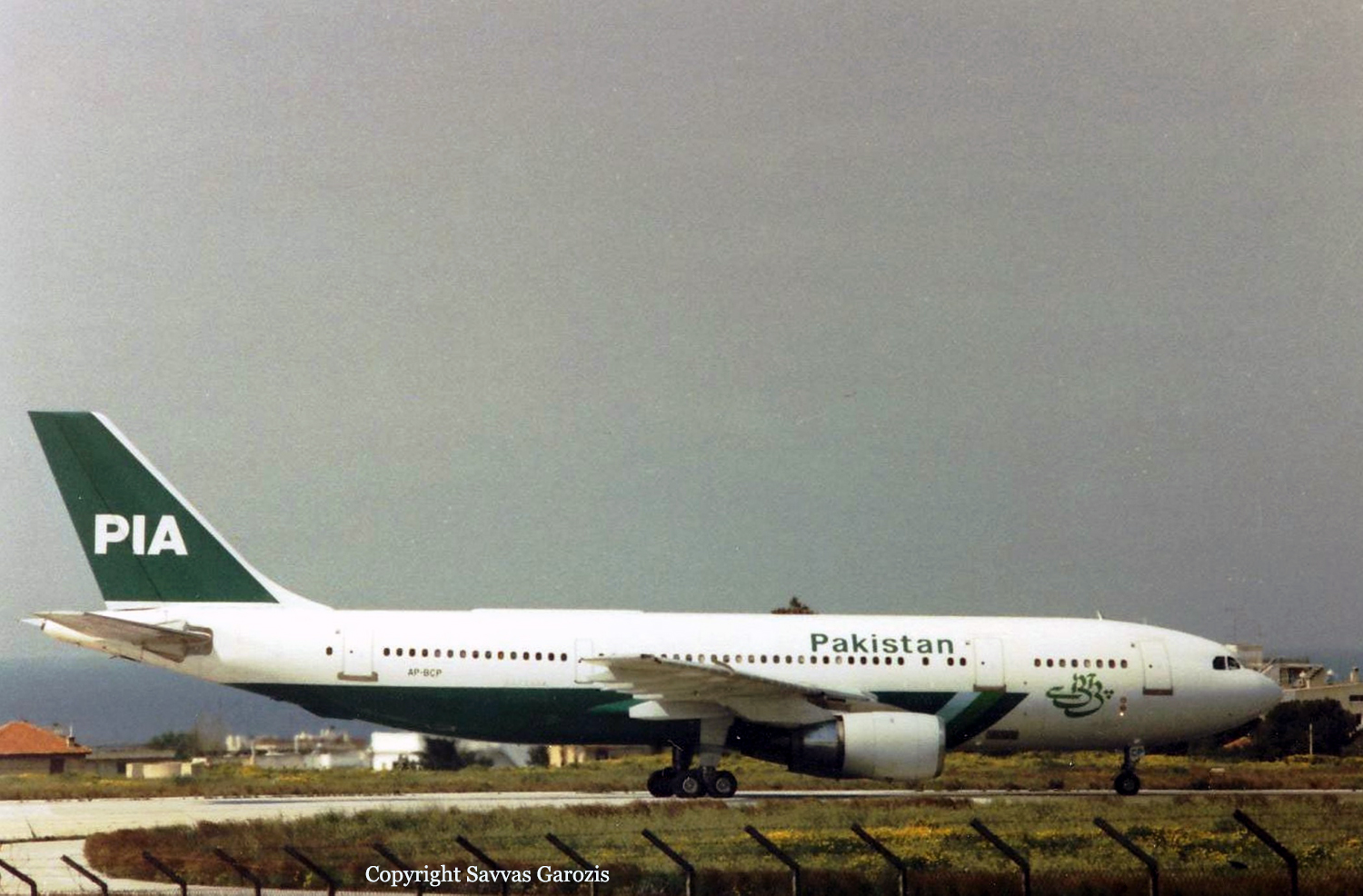
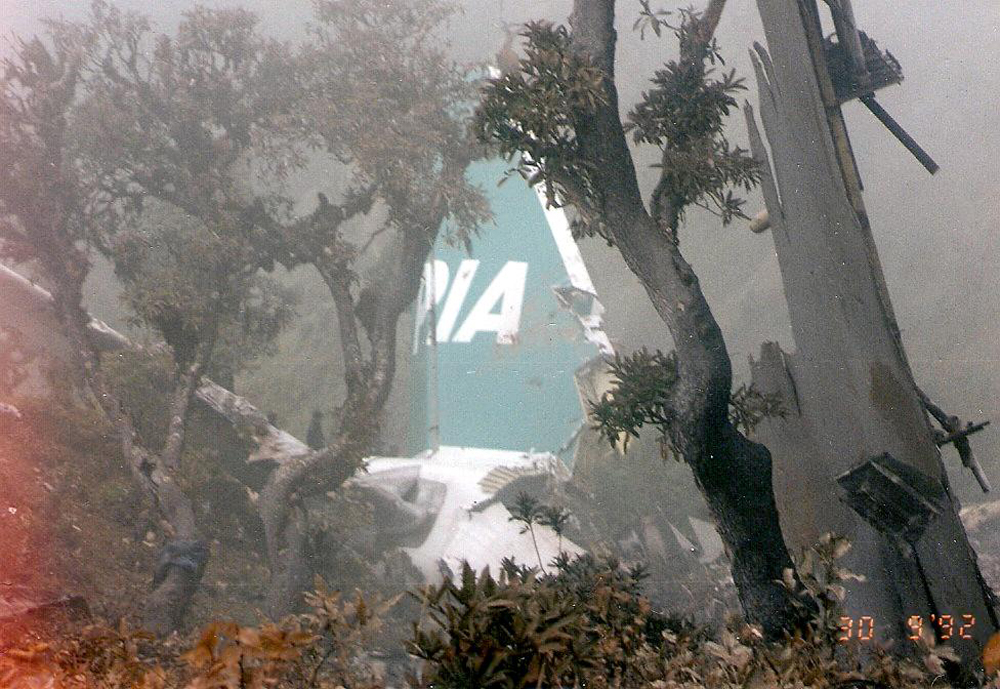

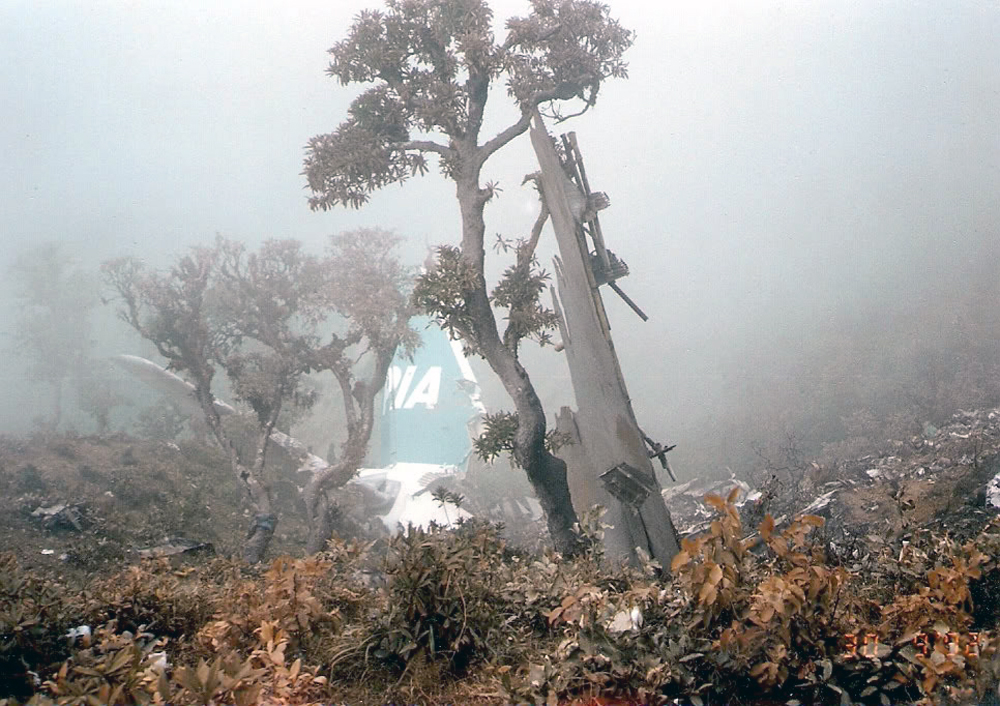


Crash of an Airbus A300B-2-203 off Qeshm Island: 290 killed
Date & Time:
Jul 3, 1988 at 1024 LT
Registration:
EP-IBU
Survivors:
No
Schedule:
Bandar Abbas – Dubai
MSN:
186
YOM:
1982
Flight number:
IR655
Crew on board:
16
Crew fatalities:
Pax on board:
274
Pax fatalities:
Other fatalities:
Total fatalities:
290
Captain / Total hours on type:
2057.00
Copilot / Total hours on type:
708
Aircraft flight hours:
11497
Circumstances:
Flight IR451 arrived at Bandar Abbas (BND) from Tehran (THR) at 08:40. The Airbus A300 was to continue to Dubai (DXB) as flight IR655. Prior to departure the crew received an enroute clearance to Dubai via the flight planned route A59 and A59W at FL140. The flight took off from runway 21 at 10:17 hours and climbed straight ahead. Two minutes later, the crew reported leaving 3500 feet for FL140 on Airway A59, estimating MOBET at 06:53 UTC (10:23 Iran time). At 10:24:00 the aircraft passed MOBET out of FL120. At 10:24:43 two Airbus was hit by surface-to-air missiles. The tail and one wing broke off as a result of the explosions. Control was lost and the aircraft crashed into the sea. The missiles were fired by the US Navy cruiser USS Vincennes. It was operating in the area together with the frigates USS Elmer Montgomery and USS John H. Sides. They were to protect other ships in the area. At about the time the Airbus took off, the radar aboard the USS Vincennes picked up a brief IFF mode 2 response, which led to the mistaken identification of the Airbus as a hostile F-14 aircraft. The USS Vincennes issued 7 challenges on the Military Air Distress (MAD) frequency 243 MHz, addressed to 'Iranian aircraft', 'Iranian fighter' or 'Iranian F-14'. These messages were followed by three challenges on the IAD (International Air Defence) radio frequency. Due to increasing tension in the area - on May 17, 1987 an Iraqi Mirage had attacked USS Stark - all aircraft in the area had to monitor 121.5 Mhz: the International Air Defence - IAD radio frequency. There was no response. Meanwhile radar operators were monitoring the Aegis screens. They reported that the incoming plane was descending with an increasing speed. In fact, the Airbus was climbing. Considering itself and USS Montgomery under aggression, USS Vincennes took the ultimate decision to launch missiles against the perceived hostile target at 10:24:22.
It remains uncertain whether the IR655 flight crew (only able to monitor the IAD, not the MAD frequencies) would have been able to rapidly identify their flight as the subject of the challenges made by the USS Vincennes.
It remains uncertain whether the IR655 flight crew (only able to monitor the IAD, not the MAD frequencies) would have been able to rapidly identify their flight as the subject of the challenges made by the USS Vincennes.
Probable cause:
The aircraft was perceived as a military aircraft with hostile intentions and was destroyed by two surface-to-air missiles.
Final Report:
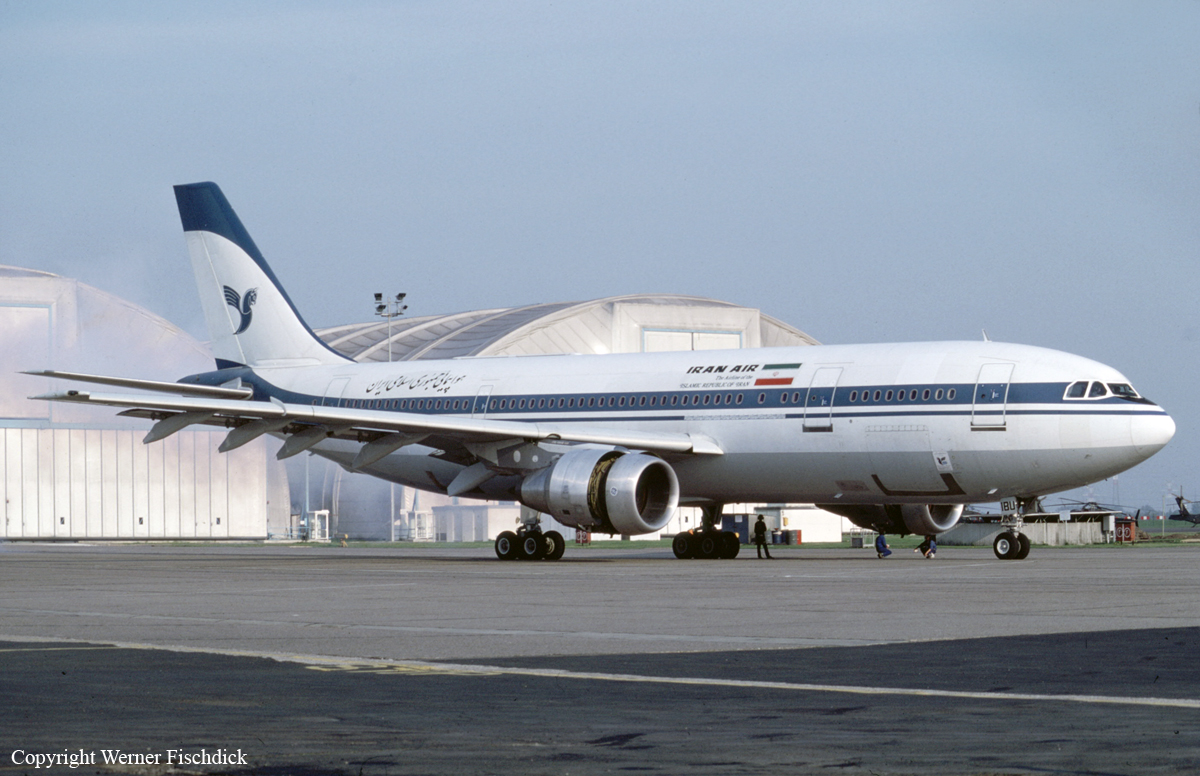
Crash of an Airbus A300B4-203 in Luxor: 5 killed
Date & Time:
Sep 21, 1987 at 0903 LT
Registration:
SU-BCA
Survivors:
No
Schedule:
Luxor - Luxor
MSN:
115
YOM:
1980
Crew on board:
5
Crew fatalities:
Pax on board:
0
Pax fatalities:
Other fatalities:
Total fatalities:
5
Aircraft flight hours:
20600
Aircraft flight cycles:
9200
Circumstances:
The crew was completing a local training flight at Luxor Airport, consisting of touch-and-go maneuvers. Following a wrong approach configuration, the pilot-in-command landed too far down the runway, about 700 meters past the runway threshold and to the right of the centerline. After touchdown, the right main gear struck runway lights. Unable to stop within the remaining distance, the aircraft overran, collided with the localizer antenna, went through a fence and came to rest, bursting into flames. The aircraft was destroyed and all five occupants were killed.
Probable cause:
Wrong approach configuration.
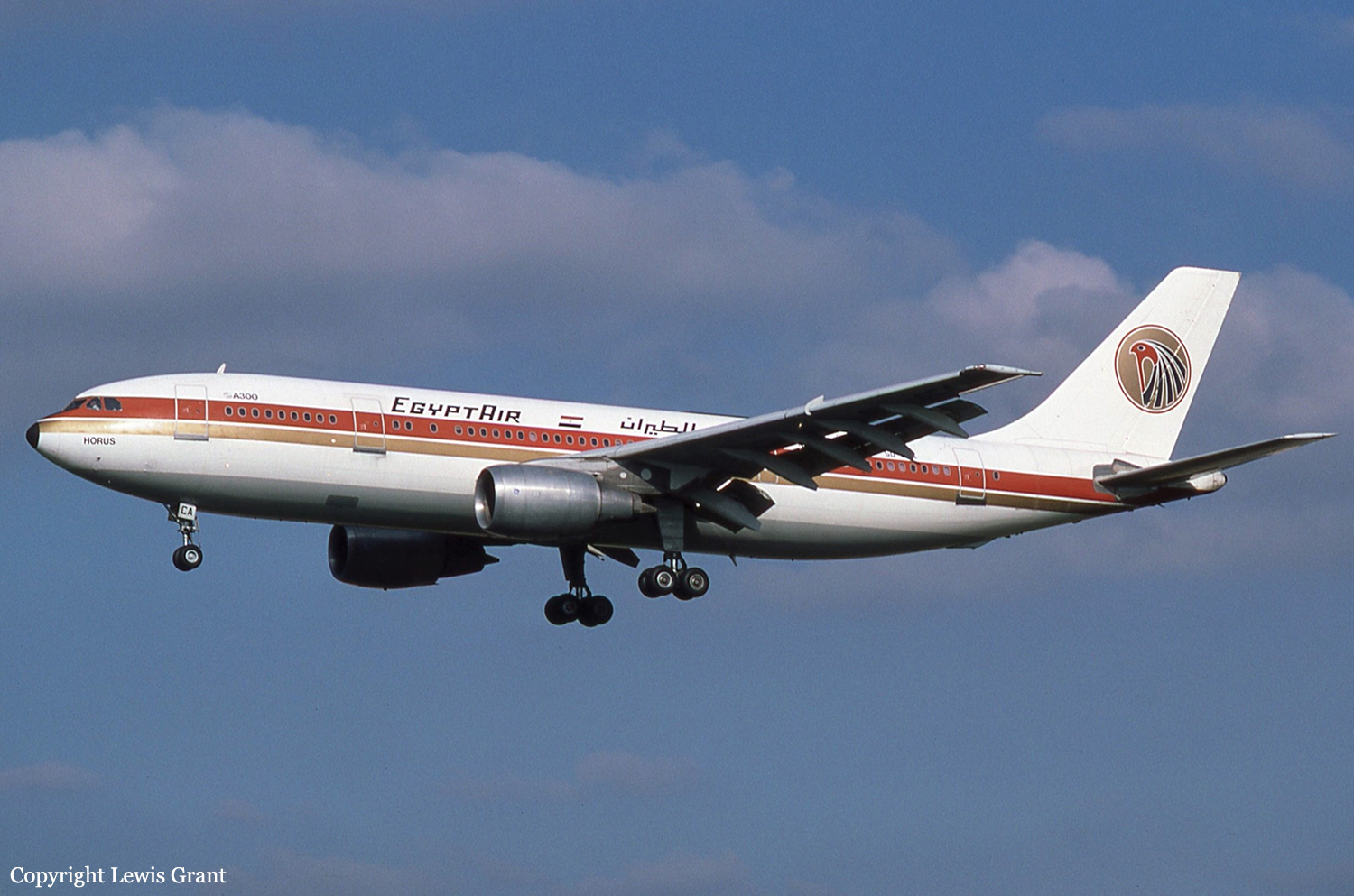
Crash of an Airbus A300B2-1C in Madras
Date & Time:
Sep 29, 1986 at 0719 LT
Registration:
VT-ELV
Survivors:
Yes
Schedule:
Madras - Bombay
MSN:
22
YOM:
1976
Flight number:
IC571
Crew on board:
11
Crew fatalities:
Pax on board:
185
Pax fatalities:
Other fatalities:
Total fatalities:
0
Circumstances:
During taxiing for takeoff, the commander gave controls to copilot for takeoff. During takeoff roll, the commander and the copilot sighted a large bird towards the right hand side and the commander told the copilot to continue with takeoff. The copilot reportedly saw another large bird on the runway centreline when the aircraft speed was around 150 knots. The copilot rotated the aircraft and when the aircraft attained 5 to 8° nose up attitude, a loud noise was heard from the right side followed by severe vibration. The commande took over the controls from the copilot at this stage and initiated action to abort the takeoff. Reverse thrust and wheel brakes were applied but the aircraft could not be stopped on the runway and rolled over to kutcha ground. There was no fire but the aircraft was damaged beyond repair. All 196 occupants were evacuated, among them 14 were slightly injured.
Probable cause:
Wrong decision of the commander to reject the take-off after the aircraft had been rotated for a lift-off, following a loud sound and severe vibrations from right engine due to bird hit.
Crash of an Airbus A300B2-120 in Kuala Lumpur
Date & Time:
Dec 18, 1983 at 1938 LT
Registration:
OY-KAA
Survivors:
Yes
Schedule:
Kuching - Singapore - Kuala Lumpur
MSN:
122
YOM:
1980
Flight number:
MH684
Crew on board:
14
Crew fatalities:
Pax on board:
233
Pax fatalities:
Other fatalities:
Total fatalities:
0
Aircraft flight hours:
3907
Circumstances:
Following an uneventful flight from Singapore-Changi Airport, the crew started the approach to Kuala Lumpung-Subang Airport by night and poor weather conditions with heavy rain falls. During an ILS approach to runway 15 with an RVR of 450 meters, the pilot-in-command was unable to establish a visual contact with the runway and eventually decided to make a go-around. Four other attempts to land failed and during the sixth approach procedure, the crew descended below the MDA until the aircraft contacted trees and crashed in a dense wooded area located 1,200 meters short of runway, bursting into flames. All 247 occupants were quickly evacuated, 20 of them were injured. The undercarriage and both engines were torn off while the aircraft was partially destroyed by a post crash fire.
Probable cause:
The flight crew's decision to continue the approach after passing the MDA below the glide without proper visual contact with the ground/runway. Published procedures violation, lack of visibility, poor weather conditions were considered as contributing factors.
